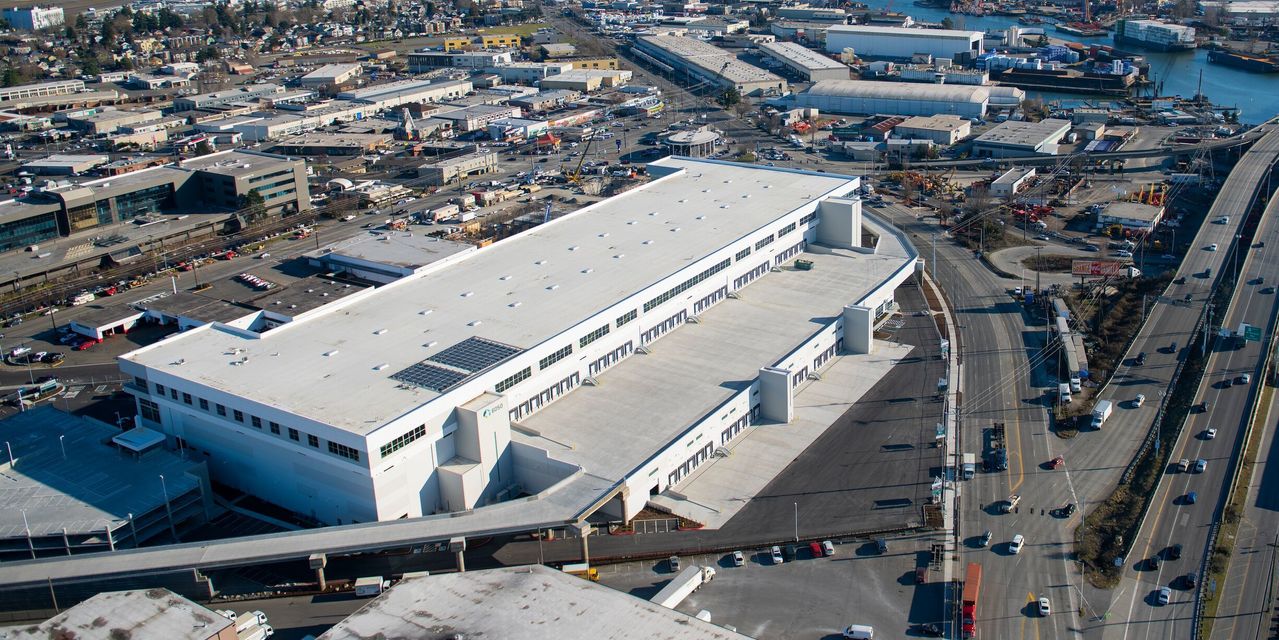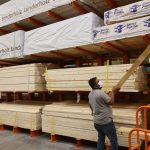
Warehouse availability in the U.S. fell to record lows in the third quarter, according to figures from real-estate firms that show industrial space is all but disappearing near some of the country’s busiest distribution hubs.
The third-quarter demand for industrial real estate exceeded supply by 41 million square feet, pushing the vacancy rate to 3.6%, down from 4.3% in the same quarter of 2020 and the lowest level in data going back to 2002, according to new figures released by real-estate firm CBRE Group Inc.
CBRE found the vacancy rate for warehouses near the ports of Los Angeles and Long Beach, Calif., the gateway complex that is a major chokepoint adding to global supply-chain snarls, reached 1% in the quarter. The region’s vacancy rate was 2.3% in the same quarter of 2020.
The Boston, central New Jersey and Charleston, S.C., markets showed a 1.9% vacancy rate during the quarter, the lowest rates outside of the Los Angeles region, according to CBRE.
“Space in our markets is effectively sold out,” said Thomas Olinger, chief financial officer of logistics real-estate firm Prologis Inc., in an Oct. 15 earnings call. “In the last 90 days, supply-chain dislocations have become even more pronounced, with customers acting with a sense of urgency to secure the space they need.”
Commercial real-estate services firm Cushman & Wakefield Inc. said it measured the average national industrial vacancy rate at 4.1% in the third quarter, the lowest it has recorded in data going back to 1995.
The squeeze on distribution space is adding to the broader congestion in supply chains, from tight container shipping capacity to backups at inland rail hubs, that has locked down inventory restocking efforts and dragged down economic recovery efforts during the Covid-19 pandemic. Space has been particularly hard to find near U.S. ports as shippers and logistics companies seek out warehouses to store containers and goods.
The surging demand for warehouse space since the pandemic began has been driven by the move by consumers to online shopping and efforts by retailers to position goods closer to their customers for faster delivery.
After the pandemic moved more shopping online, “a good percentage of that behavior change, it turns out, has stuck,” said John Morris, who leads CBRE’s industrial and logistics business in the Americas.
Cushman & Wakefield figures show asking rent rates for industrial space rose 8.3% in the third quarter over the same period a year ago, to $7.18 a square foot. CBRE reported a 10.4% year-over-year increase in asking rent rates and a 3.1% increase from the previous quarter to a record high of $8.92 a square foot.
Jason Tolliver, an executive managing director at Cushman & Wakefield who leads the company’s logistics and industrial investor business in the Americas, said the larger woes hitting manufacturing supply chains are hobbling developers’ ability to scale up capacity faster.
“Many clients who are looking to develop, they’re not able to get steel to construct their buildings right now through 2022,” Mr. Tolliver said.
Write to Lydia O’Neal at [email protected]
Corrections & Amplifications
Jason Tolliver is an executive managing director at Cushman & Wakefield who leads the company’s logistics and industrial investor business in the Americas. An earlier version of this article incorrectly said he was head of logistics and industrial research at Cushman & Wakefield. (Corrected on Oct. 22)
Copyright ©2021 Dow Jones & Company, Inc. All Rights Reserved. 87990cbe856818d5eddac44c7b1cdeb8
Appeared in the October 23, 2021, print edition as ‘Warehouse Space Gets Tighter.’







